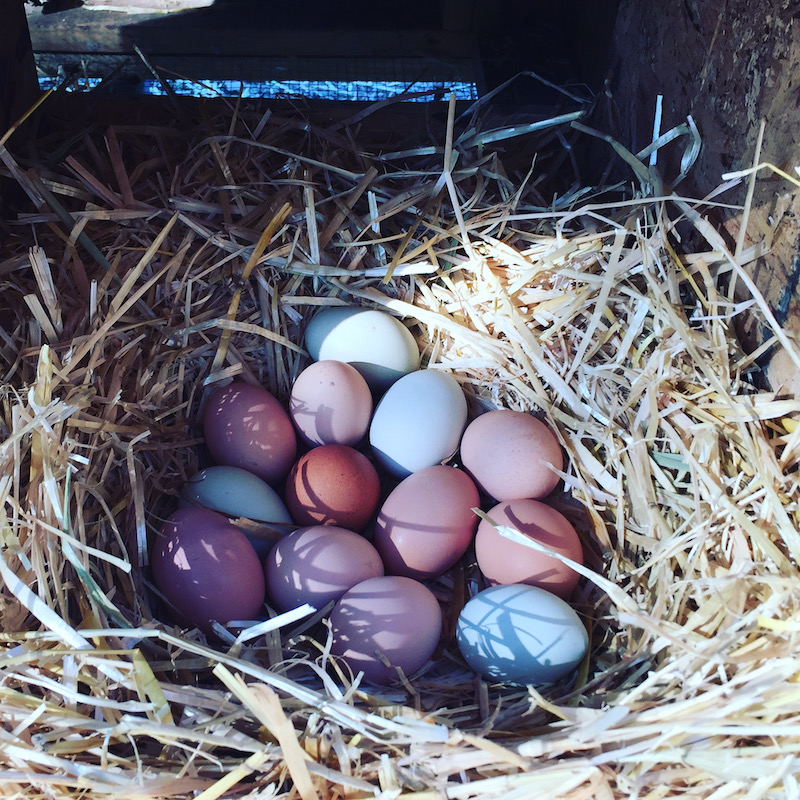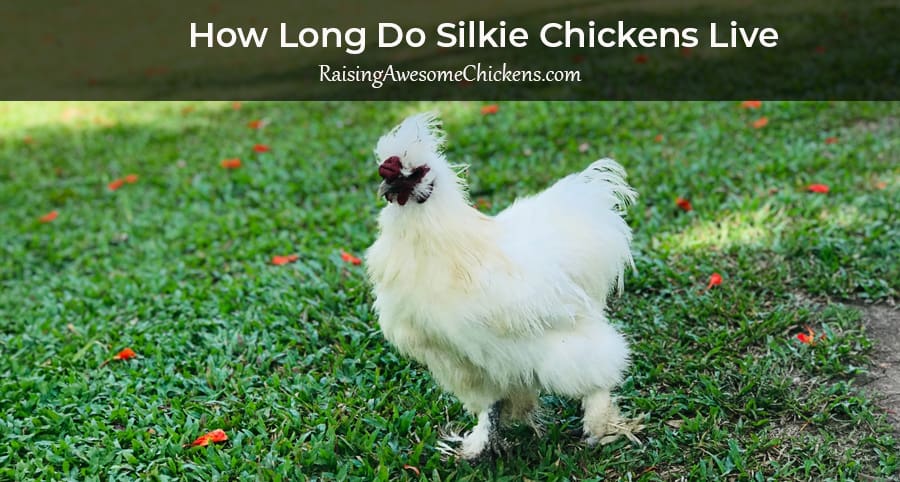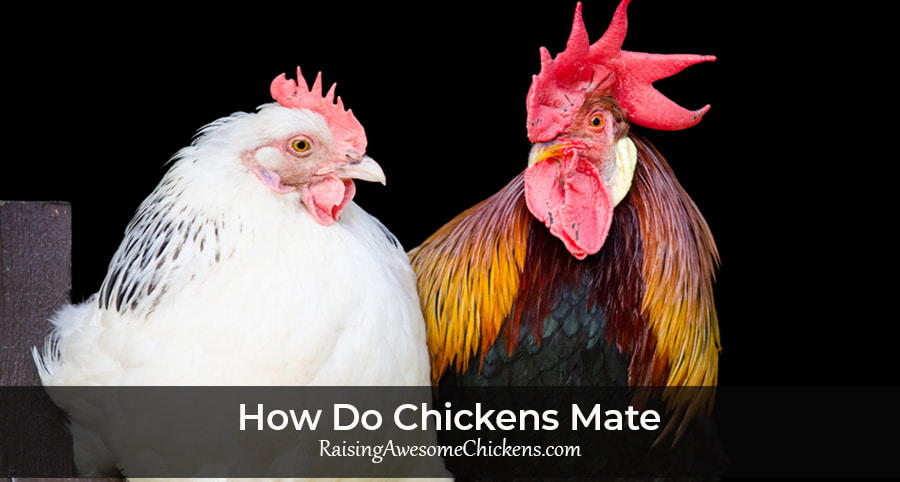Last Updated on February 16, 2024 by AwesomeChickens
When you consider purchasing your own flock of chickens, your first thought probably goes straight to the financial burden these feathered creatures may or may not create. You are probably wondering just how much chickens cost.
Chicks themselves do not cost a whole lot of money. The more popular backyard bird will average between $3 and $6 each. Then you have to average the cost of food, bedding, and care, which, more times than not, won’t break the bank.
If you are interested in raising chickens, read through this article first. We will break down the cost for everything your flock of birds will need and then help you decide if a backyard coop is right for you.
Table of Contents
How Much Do Chickens Cost
The average cost of the basic breeds of backyard baby chicks is $3-$5 each, which can range a bit depending on where you get them and how many you purchase. The cost may also fluctuate depending on what area you live in.
If you are looking to get a rare breed of chicken, you should expect to pay a much higher cost. Some of the more unique and less bred birds can cost upwards of $15-$20 each and as high as $50 per chicken.
How Much Do Full Grown Chickens Cost?
If you want to add some full-grown chickens to your flock, prepare to pay more than if you were to raise your chickens from hatchlings. A laying hen or full-grown rooster will cost you two to three times more than a baby chick would.

How Much Does it Cost to Raise Chickens Per Year?
It is a well-known fact in the farming community that chickens are social animals and should never be the only ones in the coop, so you will always be purchasing your chicken supplies in bulk.
For the sake of easy reading, we are going to base our price breakdown on a flock of 10 chickens.
Cost Breakdown
Purchasing a chicken isn’t the only expense you will pay when raising a flock of chickens. You need to provide food, shelter, entertainment, medical attention, and so much more. Here is a list of the most important things to think of when you are considering raising chickens.
1. Chicken Coop $500
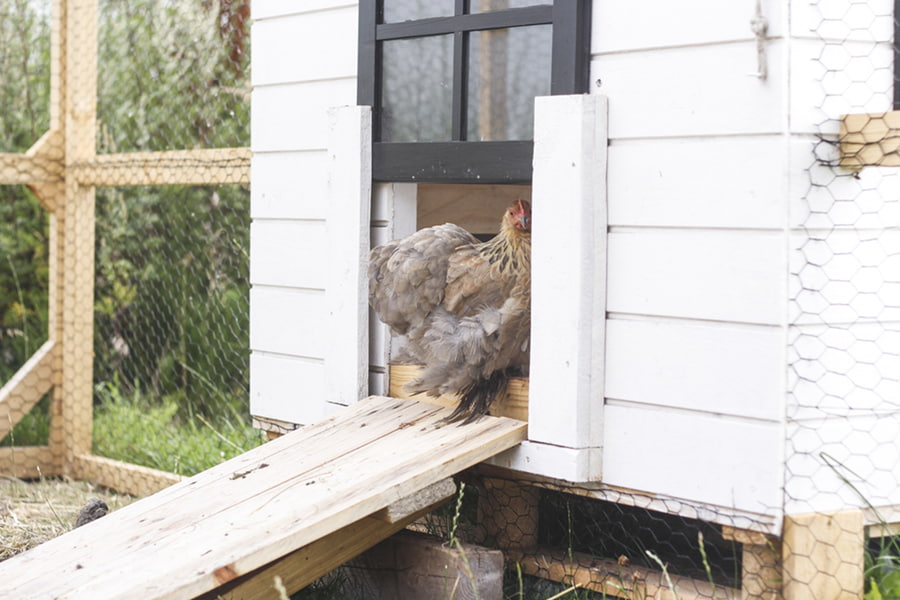
Even if you plan on having free-range free-roaming chickens, you still need a chicken coop that offers protection and the environment the birds will need to hide from the elements and thrive in any situation.
As a rule of thumb, your chicken coop should allow at least three square feet of space for each chicken in your flock. For our flock of ten birds, we need a 30 sq ft minimum chicken coop.
A chicken coop can cost quite a bit of money when you purchase the materials to make it, but you can cut costs by recycling used wood and wooden pallets. The average 30 sq. ft DIY chicken coop will cost between $300-$500.
Your coop will need a door, proper ventilation, a nesting box, roosts and perches, and a chicken run.
The chicken run is a small outdoor, fenced-in area for your chickens to leave the coop and stretch, get some exercise, and enjoy the fresh air. It is also a great way to give your hens the option of free-range feed (which can help you save money on food).
If you purchase a pre-made chicken coop, you will pay more because you are paying for both the material and the labor.
2. Feed $300
You will find that most backyard chickens eat between ½ cup- 1 cup of food each day. That is 10 cups of food daily for your flock or 10-15lbs of food every week. This amount of food will cost you about $30 a month or roughly $300 a year. (If you choose to purchase organic feed, you will end up paying more)
If you want to give your chickens treats or cracked corn as a food supplement that will cost you a little extra each month as well.
3. Bedding $100
You can save a lot when it comes to providing bedding for your chickens if you use the grass clippings and leaves that are already in your yard. Instead of bagging these up and putting them on the road, let them dry out a little and add them to your chicken coop.
Now, there are times where grass clippings and leaves aren’t enough, and you will have to purchase alternative bedding materials. The most popular one being straw. The straw will cost you on average $5-$10 per bail, which will need to be replaced every week or so, costing around $100 a year.
4. Accessories $100
You are going to want extra things in your chicken’s coop to keep them happy and healthy. Some items you should account for include:
- Feeding and water containers
- Vitamins
- Pest Control
- Heaters during the winter
- Chicken swings
- Medical attention
In all, it will cost you about $1000 for your first year of keeping chickens and around $500 every year after that. Please remember this is just an estimate (on the higher side), and the price of chicken keeping can vary depending on many different factors.
How Much Does Each Breed Cost
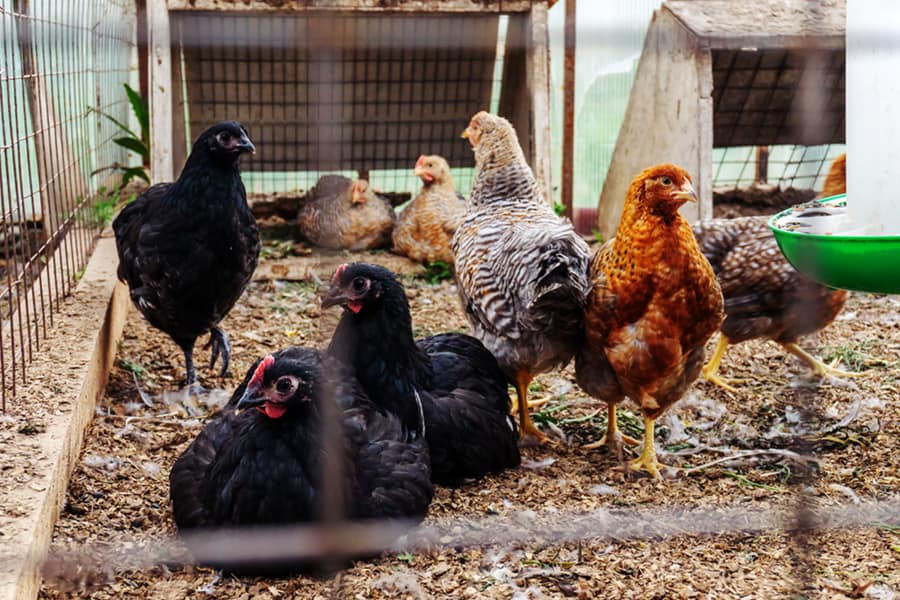
If you are looking for a quick guide on the cost of different chicken breeds, here is a list of the most popular backyard birds and their average cost.
Cochins $3 to $4
Cochins make the best kind of backyard coop bird because they are easy to care for and friendly with humans. They lay plenty of eggs each year and are hardy birds who will do well during all seasons.
Delaware $2 to $3
Delawares are great backyard chickens that produce up to five eggs each week. These birds are friendly and do not mind being handled by their owners. They thrive well in most environments, especially the cold.
Easter Eggers $2 to $3
Easter Eggers are easy to care for and provide a good amount of eggs every year. They are docile chickens and very hardy, making them perfect for any backyard coop.
Jersey Giants $3 to $4
The Jersey Giants didn’t get their name for being a small chicken breed. These are the largest chickens in the United States and quite arguably the world. Although they are very large, these guys are friendly giants and will make for great coop companions.
Marans $4 to $5
Marans lay beautiful dark-colored eggs weekly. They are docile and easygoing. These are hardy birds that don’t require special treatment to survive. This chicken is great for anyone starting up their first backyard chicken coop.
Rhode Island Reds $2 to $3
Rhode Island Reds are great egg producers, giving you up to 5 large brown eggs every week. With a flock of 10, you are not going to be short on your egg supply. These are popular chickens because of how easy they are to care for.
Leghorn $2 to $3
Leghorns are the most popular chicken used in the commercial market for eggs today because they do not require a lot of attention and lay an abundance of white eggs each week. If you want an egg producer in your coop, these are a great option.
Is it Better to Raise Chickens for Their Eggs or Buy Them From the Store?
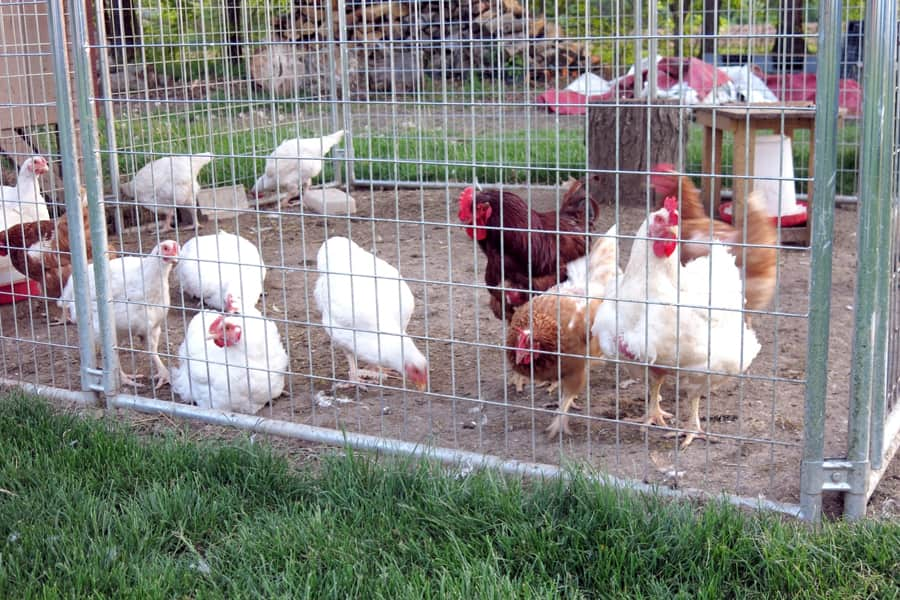
When considering raising chickens solely for egg production, many factors are used to decide if it is cost-efficient or beneficial. Each situation is different, and the pros and cons will vary depending on who you ask.
Cost Breakdown
Before we get into any other facts and information, let’s look at this from the numbers. With a flock of 10 chickens that lay on average 5 eggs each week, you can estimate you are going to bring in about 4 dozen eggs every week. A dozen of farm-fresh eggs can cost around $4 meaning your chickens just produced $16.
Now, let’s go back to our estimate of how much it will cost to raise 10 chickens per year in a backyard coop, which at the very very most is $500 equally to $10.41 a week.
So from a number-based standpoint, you are saving 73 dollars a year on eggs.
Depending on who you ask, $73 in savings worth raising chickens will have many different answers.
Benefits of Raising Chickens for Egg Production Compared to Store-Bought
So, what are the benefits of raising your chickens for their eggs rather than purchasing eggs from the local grocery store?
Health Benefits
Many commercial chickens are pumped full of antibiotics while being kept to produce store-bought eggs. This medication can travel through their bodies and wind up in the very food you put on the table for your family’s breakfast in the morning.
There is also the fact that you know exactly what your chickens are consuming daily, and you can be confident they are getting the proper nutrition and diet to produce a healthy egg.
Better Treatment
It is no secret that commercial chickens are not getting the same treatment as the birds living in backyard coops. Most of these birds are stuffed into small overcrowded cages or coops and have just enough to survive and lay eggs that are sold to shopping markets.
Many of these hens are only kept for a few years while they are their prime laying years and then are destroyed, not retired to sit in a roosting basket or lay in the sun.
Support Local Farmers
If you are not entirely keen on raising your own chickens, you should still opt to buy your eggs and chicken meat from local farmers. These options may be a little more pricey than the supermarket chains’ products, but you will not only be supporting your local farmers who play a huge role in our community, but you will know the food you are eating is fresh and good for you.
Is it Worth Raising Chickens?
Now that we have gone through the breakdown of how much chickens cost, we are ready to discuss whether or not it is worth raising chickens. And in our opinion, we have to say the benefits out-weight the negatives. And the only negative we have is the minimal effort it takes to maintain a flock of 10 chickens.
Looking For Ways to Save?
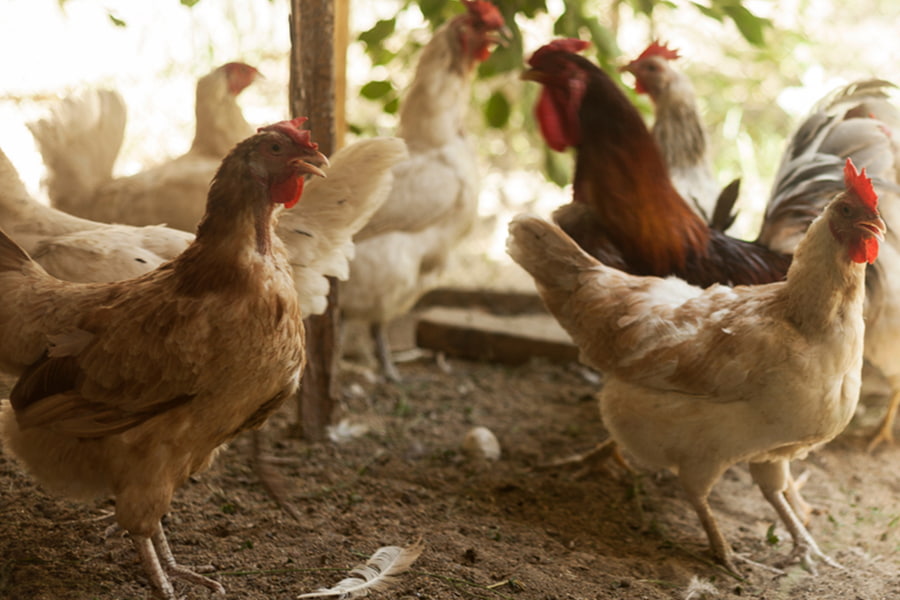
Although caring for chickens isn’t a very expensive task from the start, you can save a bunch of money if you are crafty and savvy enough. Here are a few tips we have found to help cut down the cost of raising chickens.
- Purchasing baby chicks in high quantities is cheaper than just one or two.
- To save on food costs, allow your chickens room to free-range and roam.
- Another way to save on food is by giving your chickens leftover food suitable for them to eat.
- Instead of purchasing mulch or hay, use grass clipping and bedding when possible.
- When building a coop or run, use as much recycled material as you can find
What Types of Human Food is Safe for Chickens?
Interested in saving money by giving your chickens your table scraps? Here is a list of chicken-friendly people’s food.
- Rice
- Cottage cheese
- Cheese
- Dry bread crumbs or bites
- Wilted Lettuce
- Greens
- Cooked vegetables
- Popcorn
- Beef scraps
- Fruit
- Pork Scraps
- Yogurt
All of these options are great ways to reduce your chicken feed bill and stop food waste when you have leftover items from dinner.
Summing Things Up
Chickens are some of the most simple and cheaper farm animals to purchase and raise. These birds don’t need much to thrive and are happy to be free to roam and peck at whatever they can find in the ground, compost, or hay.
As long as you are looking to purchase average backyard chickens and not rare breeds, chickens do not cost very much at all.


